NPK FERTILIZER PRODUCTION SYSTEM
At GENEMA, we offer end-to-end solutions for the fertilizer industry, including plant planning, engineering, manufacturing, production consulting, and personnel training.
NPK Fertilizer Production Stages
NPK fertilizer plants are facilities where plant-beneficial elements and minerals are combined through formulations, and the resulting mixtures are granulated into specific forms.
While the term “NPK” refers to Nitrogen, Phosphorus, and Potassium—the nutrients most heavily consumed by plants—it would be incorrect to limit the definition to these three.
These plants are capable of dosing and incorporating both macro and micro (trace) elements. Fertilizers commonly found on the market with formulations such as 20-20-20+TE or 18-44-0 are examples of NPK (compound) fertilizers.
NPK Raw Material Selection
Nitrogen, Phosphorus, and Potassium mentioned in NPK formulations do not exist in elemental form. These elements are typically found in nature as salts. Therefore, such salts are sourced and contribute to the formulation in proportion to their N, P, or K content. Example raw material sources are listed below:
| Nitrogen Sources | Phosphorus Sources | Potassium Sources |
| Urea | Mono-Ammonium Phosphate (MAP) | Potassium Chloride (MOP) |
| Calcium Ammonium Nitrate (CAN) | Di-Ammonium Phosphate (DAP) | Potassium Sulfate (SOP) |
| Ammonium Sulfate (AS) | Triple Super Phosphate (TSP) | Potassium Nitrate |
Many materials, whether listed in the table or not, can be considered potential raw materials for fertilizer production.
Various factors such as supply conditions, standardization, cost, and the target formulations play a role in raw material selection, making it a critical stage in the overall process. Appropriate storage areas should be provided in the fertilizer plant for these raw materials.
Urea/DAP Crushing Process
Some of the raw materials delivered to the NPK fertilizer plant may not be in powder form. In such cases, it is necessary to break down the crystalline, granular, or prilled structures and micronize the materials to obtain a fine powder.
NPK Powder Blending Process
The loader operator fills the powdered NPK raw materials into the dosing hoppers in sequence. Typically, five macro-element hoppers and two micro-element hoppers are used in NPK plants.
Macro-element hoppers are responsible for dosing the raw materials used in greater quantities by mass during production. Therefore, these hoppers are designed with a larger volume compared to micro element hoppers.
After the hoppers are filled, the next step is to select the recipe to be produced using the automation system’s touchscreen interface. The operator selects the desired recipe and starts the process. Each fertilizer dosing hopper discharges the required quantity of raw material—based on the selected recipe—onto a central conveyor via hopper-bottom weighing conveyors. All raw materials, discharged from the dosing hoppers in the proportions specified by the formulation, are conveyed to the NPK powder mixer through this central collection conveyor.
NPK Powder Mixer
The NPK powder fertilizer mixer blends the raw fertilizer materials dosed according to the selected recipe. The performance of the powder mixer is evaluated by how quickly it achieves a high degree of homogeneity. The internal design of the mixer must consider the potential formulations in the fertilizer industry and the physical and chemical properties of the raw materials. This approach helps prevent abrasion caused by corrosive chemical ingredients and ensures durable, long-lasting systems.
The mixture produced by the powder fertilizer mixer can be sold directly as a powder compound fertilizer, which has a distinct and important market. Some production facilities are established solely for manufacturing powder compound fertilizers. Due to their simpler process, these plants require fewer machines and equipment, making them more cost-effective to set up. After the powder mixing unit, a single fertilizer packaging or bagging line is typically sufficient to complete a powder fertilizer plant. If a further step is desired, the powdered mixture can be granulated. The main purpose of granulation is to improve the flowability of the material.
Large-scale farmers can apply granular NPK fertilizers using agricultural implements such as seeders or broadcast spreaders. However, using powdered NPK fertilizers in such machines can lead to clogging and application difficulties. Therefore, granular NPK fertilizers clearly offer greater added value.
Fertilizer Granulator Drum
The term “drum” in “fertilizer granulator drum” generally refers to cylindrical structures. However, when fertilizer granulation is considered holistically, not all granulator machines need to be cylindrical in design.
For example, Genema-TurboGEN granulators are vertically structured machines that are successfully used in fertilizer production. TurboGEN granulators are ideal for producing niche and specialty fertilizer products at smaller capacities (1 to 4 tons per hour). When production capacity increases (e.g., 10 tons per hour) and standard NPK fertilizers are required, horizontal granulation systems such as NextGEN and RotGEN offer cost-effective solutions.
The working principle in these granulators is based on wet granulation. In this method, the dry fertilizer mix is moistened to form a slurry, which is then shaped into granules through the rotational motion of the granulator. While the standard granule sizes in the fertilizer industry typically range from 2 to 4 mm, it is also possible to produce microgranular fertilizers with particle sizes between 0.5 and 1.2 mm using these systems.
Recycle rates are critical in evaluating the performance of the fertilizer granulator drum. For instance, if the goal is to obtain granules in the 2–4 mm range, a screening process is applied after granulation. The proportion of product falling within the target size range provides valuable data for assessing granulation efficiency. Material smaller than 2 mm or larger than 4 mm is not wasted—it is crushed and returned to the granulation system. The rate at which this recycling occurs directly affects production costs.
Granular Fertilizer Drying/Cooling
Granular fertilizer dryers should be designed to reduce moisture content while preserving the structural integrity of the granules. The “shock effect” achieved through the cooling process after drying enhances the mechanical strength of the granules under storage and packaging conditions.
For certain products, some manufacturers may opt for compression-based press machines—such as those produced by GENEMA—to create granule-like materials without involving drying and cooling steps. While this represents an alternative production method, it is not always the most suitable solution. Overly hard, press-formed granules are often not preferred in agricultural applications. It is important to distinguish between granulated and pressed products, and to accurately identify market needs.
In conclusion, building a fully integrated granulation line—including both drying and cooling stages—is critical, especially in high-capacity operations, to ensure the production of high-quality, value-added granular fertilizers.
Granular Fertilizer Coating Process
Fertilizer coating drums apply liquid coatings to granules that have already been dried and cooled. These liquids may be clear and single-component, or colored and composed of multiple ingredients. Producers may choose to coat granular fertilizers for a variety of reasons. Some coating materials are designed to enhance nutrient uptake by plants, while others contain additional nutrientsto support plant growth.
In some cases, coatings are applied for aesthetic and branding purposes, providing the granules with a distinctive shine and visual appeal.
NPK Fertilizer Packing/Bagging
After the produced fertilizers are screened, they are ready for packaging. The NPK fertilizer packaging machine accurately fills 25–50 kg packages or sacks. In NPK fertilizer plants, semi-automatic packaging systems are commonly preferred. In this system, the operator manually places the sack onto the filling spout, and the machine dispenses the programmed amount of fertilizer into the sack. Once filled, the sack is released onto a conveyor, where its top is stitched by an automatic sewing machine. The finished product is then ready for shipment.
NPK Production Line- Machinery List
| 1 | Macro-Element Dosing Bunkerx5 |
| 2 | Macro-Element Under Hopper Weighing Conveyorx5 |
| 3 | Micro-Element Dosing Bunkerx2 |
| 4 | Micro-Element Under Hopper Weighing Conveyorx2 |
| 5 | Raw Material Collection Conveyor |
| 6 | Mixer Feeding Conveyor/Elevator |
| 7 | NPK Powder Mixer/Blender |
| 8 | Granulator Feeding Conveyor/Elevator |
| 9 | Drum Granulator |
| 10 | Drum Dryer Feeding Conveyor/Elevator |
| 11 | Drum Dryer |
| 12 | Dryer Combustion Chamber |
| 13 | Dryer Dilution Fan |
| 14 | Dryer Gas Suction Cyclone |
| 15 | Drum Cooler Feeding Conveyor/Elevator |
| 16 | Drum Cooler |
| 17 | Cooler Dilution Fan |
| 18 | Cooler Gas Suction Cyclone |
| 19 | Coater Feeding Conveyor/Elevator |
| 20 | Drum Coater |
| 21 | Coater Dilution Fan |
| 22 | Coater Gas Suction Cyclone |
| 23 | Gas Scrubber Chimney |
| 24 | Process Screens |
| 25 | Product Return Hopper |
| 26 | Product Return Conveyor/Elevator |
| 27 | Urea Melting Reactor |
| 28 | Raw Material Crusher (Urea/DAP) |
| 29 | Process Crusher |
| 30 | Packing/Bagging System |
To summarize, NPK fertilizer production involves a series of fundamental physical processes such as mixing, granulation, drying, and cooling. In this context, the process is not as complex as producing raw fertilizer materials like Urea or MAP. However, achieving optimal results requires proper equipment selection and sizing, high-quality machinery, and in-depth process knowledge—all of which demand a strong engineering and manufacturing infrastructure.
At GENEMA, we combine our many years of engineering expertise with our manufacturing capabilities to support you from start to finish. We are committed to delivering the highest technology at highly competitive prices. All of our machines are 100% designed and manufactured in Turkey.

